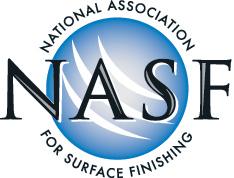| Presented in Partnership with: | |||
 |
 |
 |
 |
Search Results
The 26th William Blum Lecture, Electroanalytical Methods for Research and Development in Electroplating
Author: Dr. Yutaka Okin
Issue: , 1985Electroanalytical chemistry, as defined by Lingane in 1953,1 comprises methods of chemical analysis based on electrochemical reactions at metallic electrodes in electrolytes. This definition has since been considerably broadened.2 Extensive studies of fundamental principles of various electroanalytical techniques carried out over more than 30 years proved that these techniques are highly useful not only for chemical analysis but for investigations of industrially important electrochemical areas such as electroplating, corrosion, batteries and electrosynthesis. Consequently, the term "electroanalytical methods" is now used in a much broader sense and practically synonymously with "electrochemical methods."3
 |
 |
 |
 |
 |
| Home | Subscribe | Regulations | Compliance Assistance | News | Resources | Resource Locators | Directories | Online Training | About | Search | Contact | NASF.org |
The information contained in this site is provided for your review and convenience. It is not intended to provide legal advice with respect to any federal, state, or local regulation.
You should consult with legal counsel and appropriate authorities before interpreting any regulations or undertaking any specific course of action.
Please note that many of the regulatory discussions on STERC refer to federal regulations. In many cases, states or local governments have promulgated relevant rules and standards
that are different and/or more stringent than the federal regulations. Therefore, to assure full compliance, you should investigate and comply with all applicable federal, state and local regulations.
